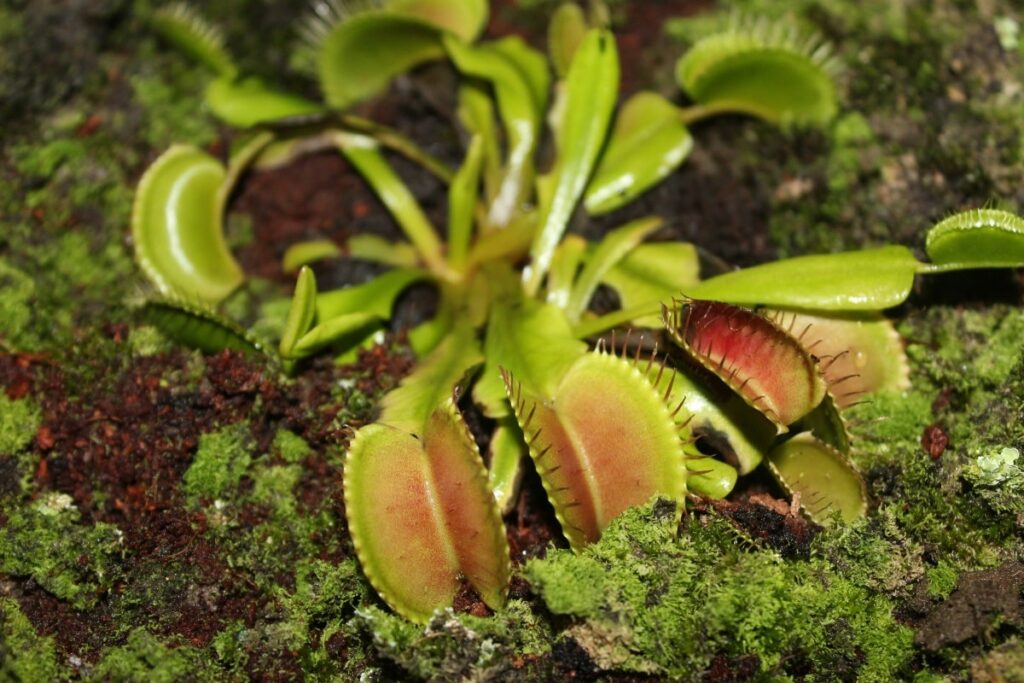For centuries, humans have been captivated by the enigmatic insect-eating plants, also known as carnivorous plants. These plants have evolved to capture and digest insects as a means of supplementing their nutrient-poor environments. Despite their strange and eerie appearance, they offer a plethora of benefits to both the plant and the environment. For today’s plant enthusiasts, these carnivorous plants are unique additions to any plant collection. Join in as we dive into the best plants that eat bugs.
One of the primary advantages of insect-eating plants is their ability to control pest populations. By consuming insects, these plants can help to reduce the number of harmful pests in their surrounding areas. This can be particularly advantageous in agricultural settings, where pests can cause significant damage to crops.
Moreover, insect-eating plants play a crucial role in nutrient cycling. By consuming insects, these plants are able to obtain nutrients that may be lacking in their soil or environment. This can help to improve the overall health and vitality of the plant, as well as the surrounding ecosystem.
Finally, insect-eating plants are a fascinating subject of study and observation. Their unique adaptations and behaviors have captured the attention of scientists and nature enthusiasts alike, leading to a greater understanding of the complex relationships between plants and insects.
Overall, insect-eating plants are a valuable addition to any ecosystem, offering a range of benefits that make them worthy of admiration. Whether you are a gardener seeking to control pests or a nature lover interested in observing these intriguing plants, there is much to appreciate about these captivating organisms.
Venus Flytrap: The Classic Carnivorous Plant
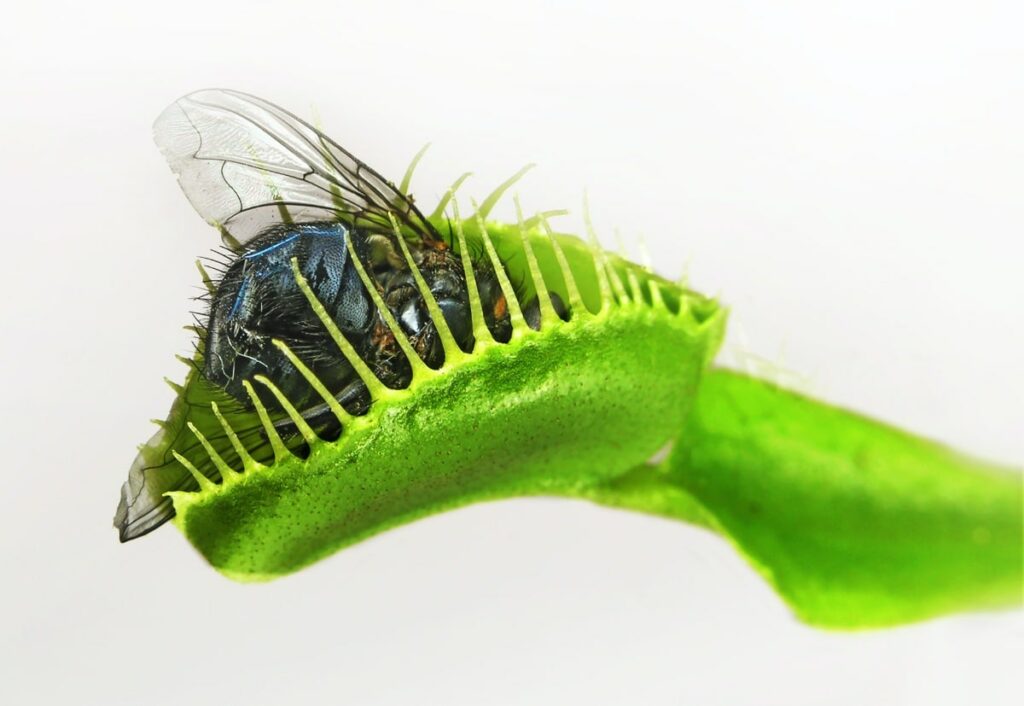
The Venus Flytrap, a carnivorous plant that is renowned worldwide, is a complex and intriguing organism. This plant is indigenous to the wetlands of the southeastern United States and is known for its exceptional ability to ensnare and digest insects.
The Venus Flytrap’s leaves have undergone modifications that have resulted in the formation of a trap. The trap is lined with minuscule hairs that, when triggered by an insect, cause the trap to snap shut. Once the trap is closed, the plant secretes digestive enzymes that break down the insect’s body, allowing the plant to absorb the nutrients.
One of the most captivating aspects of the Venus Flytrap is its ability to differentiate between living and non-living objects. The plant will only close its trap if it detects movement and a certain amount of pressure. This means that the plant will not waste energy on objects that are not potential prey.
The Venus Flytrap is a relatively easy plant to care for, but it does require specific growing conditions. It needs a lot of sunlight and a humid environment, so it is best grown in a terrarium or greenhouse. The plant also requires a soil that is low in nutrients, as it gets most of its nutrients from the insects it catches.
Overall, the Venus Flytrap is a fascinating and unique plant that is sure to capture the attention of anyone who sees it in action. It is a great addition to any collection of carnivorous plants and is a must-have for anyone interested in taking home one of the best plants that eat bugs.
Pitcher Plants: The Ultimate Insect Traps
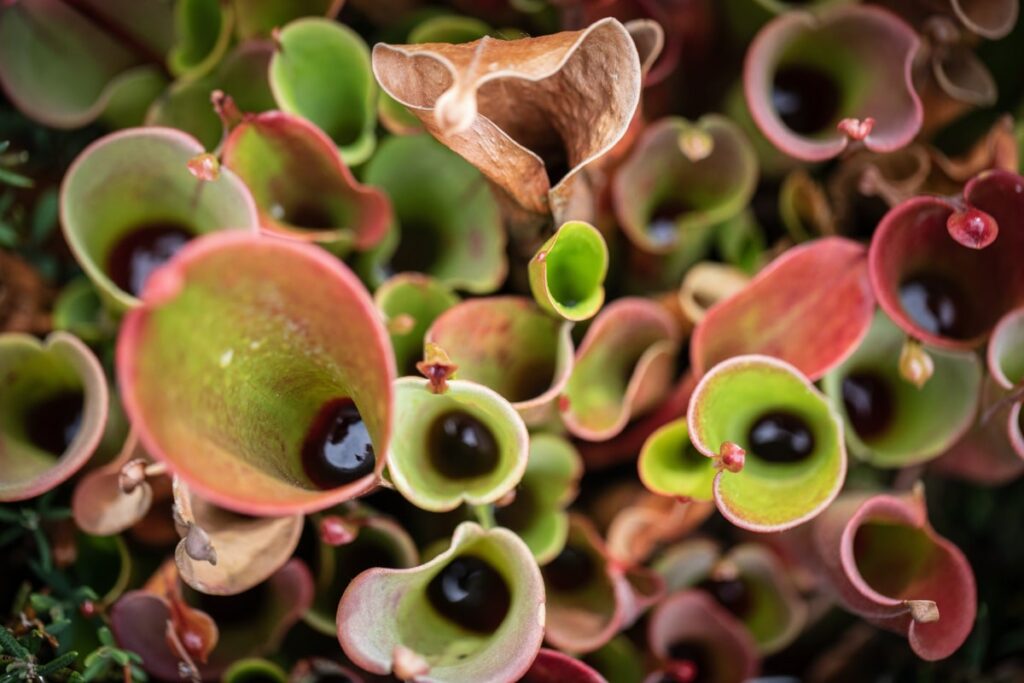
Pitcher plants are an enigma of the plant world, with their carnivorous tendencies and unique adaptations. Found in various parts of the world, including North America, South America, and Asia, pitcher plants are a true wonder of nature.
The most striking feature of pitcher plants is their modified leaves, which form a deep, funnel-shaped cavity filled with a digestive fluid. The rim of the cavity is often brightly colored and patterned, attracting insects to the plant. Once an insect lands on the rim, it slips and falls into the cavity, where it is trapped and digested by the plant. This burst of activity is a testament to the plant’s unique ability to adapt to its environment.
Pitcher plants are incredibly effective at catching insects, and they have been known to trap everything from flies and ants to spiders and even small frogs. Some species of pitcher plants are even capable of capturing and digesting small mammals, such as mice and shrews. This level of diversity in prey is a testament to the plant’s ability to adapt to different environments.
One of the most impressive things about pitcher plants is their ability to adapt to different environments. Some species of pitcher plants have evolved to live in nutrient-poor soils, where they rely heavily on insects for their survival. Other species have adapted to live in wetlands and bogs, where they are able to trap and digest a wide variety of insects and other small animals. This burst of diversity in their habitats is a testament to the plant’s ability to adapt to different environments.
If you are looking for a unique and fascinating plant to add to your collection, a pitcher plant is definitely worth considering. Not only are they beautiful and interesting to look at, but they also provide a natural and effective way to control insect populations in your home or garden. So why not give a pitcher plant a try and see for yourself why they are considered one of the best plants that eat bugs.
Sundews: Sticky and Deadly
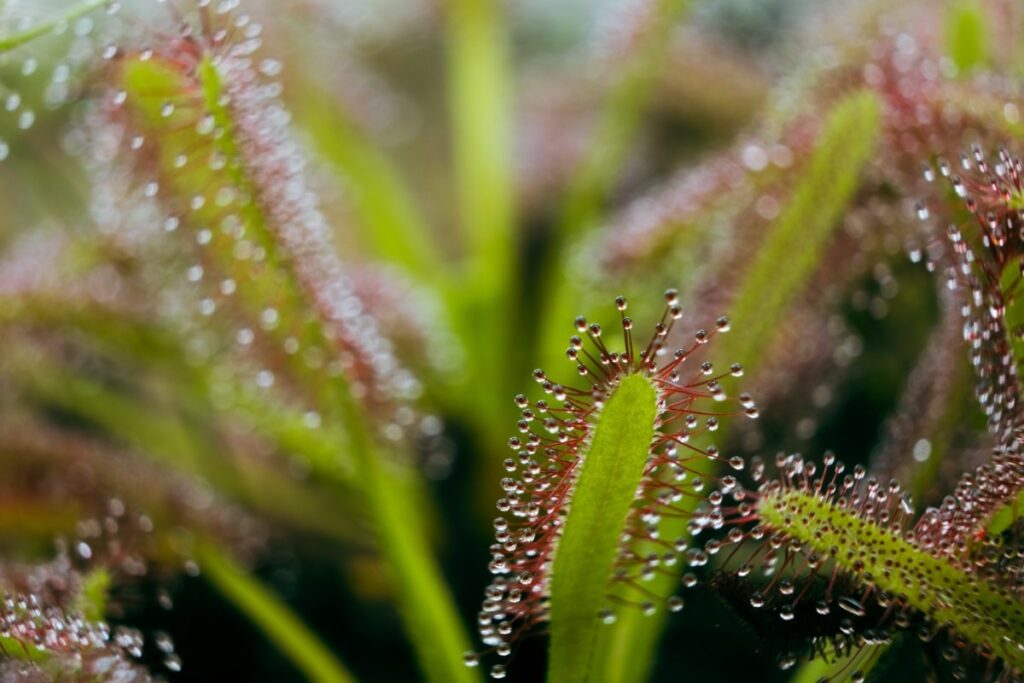
Sundews, oh how they captivate us! These carnivorous plants are a wonder to behold, with their sticky and lethal traps. Found in various parts of the world, including North and South America, Europe, and Australia, sundews are known for their unique ability to attract, capture, and digest insects and other small prey.
The leaves of sundews are covered with tiny, hair-like structures called tentacles. These tentacles are covered with a sticky, mucilaginous substance that traps insects and other small prey. Once an insect lands on the leaf, the tentacles slowly curl around it, trapping it in the sticky substance. The plant then secretes digestive enzymes that break down the insect’s body, allowing the sundew to absorb the nutrients.
Sundews are particularly effective at catching small flying insects, such as gnats and fruit flies. They are also known to catch spiders, beetles, and other crawling insects. Some species of sundews can even catch small frogs and lizards! Can you believe it?
One of the most fascinating things about sundews is their ability to move their tentacles in response to prey. When an insect lands on a leaf, the tentacles closest to the insect will curl around it, while the other tentacles remain extended. This allows the plant to conserve energy and only digest the prey that it has caught. It’s like they have a mind of their own!
Sundews are relatively easy to care for and can be grown indoors or outdoors, making it an easy pick for including it as one of the best plants that eat bugs. They require moist soil and plenty of sunlight, but should be protected from direct sunlight during the hottest part of the day. If you’re looking for a unique and fascinating plant that can help control insect populations in your home or garden, consider adding a sundew to your collection.
Butterworts: The Sneaky Insect Catchers
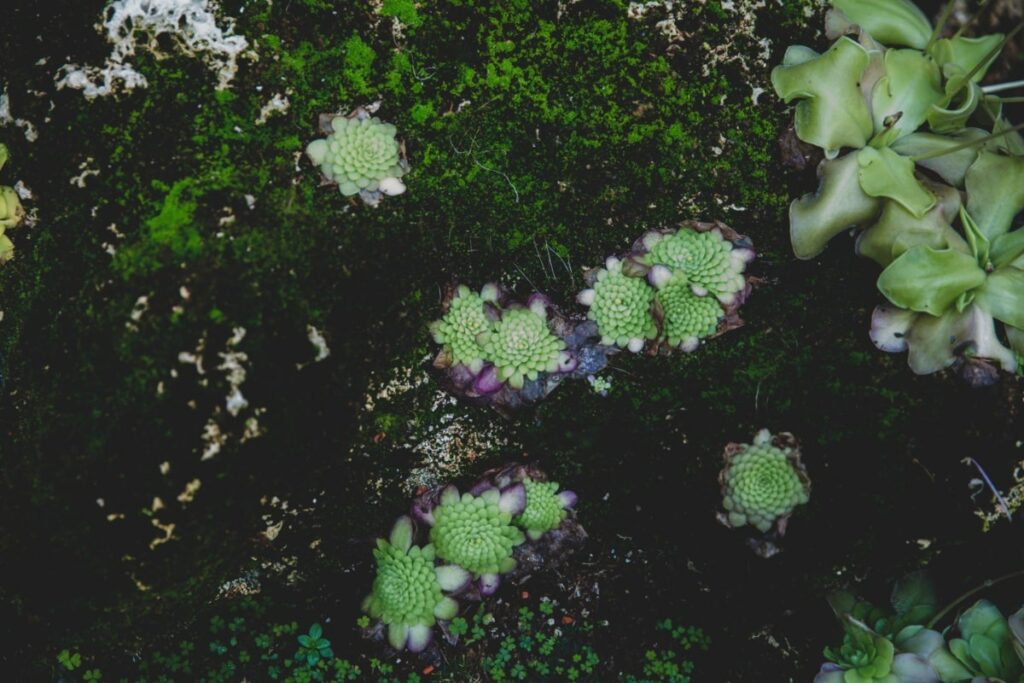
Butterworts, the sneaky insect catchers, are a group of carnivorous plants that have adapted to survive in nutrient-poor soils by supplementing their diet with insects. These plants are native to wetlands, bogs, and other moist habitats, and they have a unique way of catching insects that is both fascinating and sneaky.
Butterworts produce sticky, glandular leaves that are covered in a mucilaginous substance, making them among the best plants that eat bugs. When an insect lands on the leaf, it becomes stuck in the mucilage, and the leaf curls up around the insect, trapping it inside. The plant then secretes digestive enzymes that break down the insect’s body, allowing the plant to absorb the nutrients.
What’s interesting about butterworts is that they are not picky eaters. They will catch and consume any insect that lands on their leaves, including flies, mosquitoes, ants, and even spiders. This makes them an excellent natural pest control solution for gardens and greenhouses.
There are over 80 species of butterworts, and they come in a variety of shapes and sizes. Some species have flat, rosette-shaped leaves, while others have long, slender leaves that curl up like a corkscrew. Some species produce beautiful flowers that range in color from white to pink to purple.
If you’re interested in growing butterworts, they are relatively easy to care for. They prefer moist, well-draining soil and bright, indirect light. They can be grown indoors or outdoors, depending on the species. Just be sure to keep them away from direct sunlight, as this can damage their delicate leaves.
Butterworts are a fascinating group of carnivorous plants that are excellent at catching and consuming insects. They have a unique and sneaky way of catching their prey, and they come in a variety of shapes and sizes. So if you’re looking for a natural pest control solution, consider adding a butterwort to your collection.
Nepenthes: The Tropical Insect-Eaters
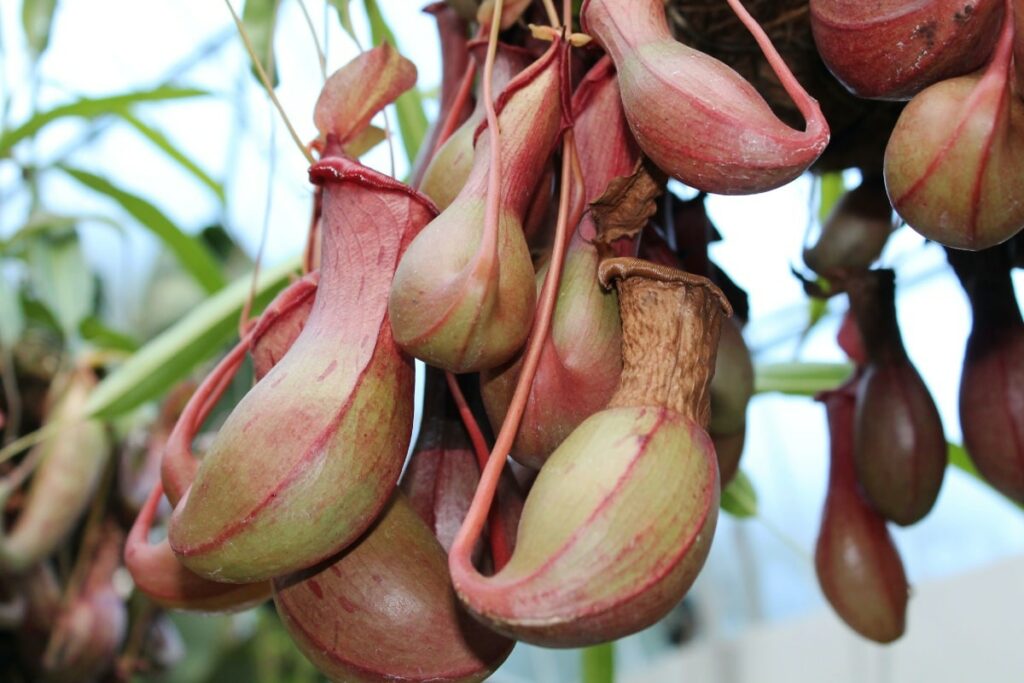
The Nepenthes, also known as the tropical pitcher plant, is a captivating carnivorous plant that belongs to the family of insect-eating plants. These plants are indigenous to the tropical regions of Southeast Asia, Madagascar, and Australia, and have pitcher-shaped leaves that are filled with a digestive fluid that lures and entraps insects. The fluid contains enzymes that break down the insects’ bodies, allowing the plant to absorb the nutrients it needs to survive.
What makes Nepenthes plants so intriguing is their remarkable ability to adapt to their surroundings. Depending on the species, these plants can thrive in a variety of habitats, including rainforests, swamps, and even on rocky cliffs. Their versatility is truly remarkable.
In addition to their insect-eating prowess, Nepenthes plants are also renowned for their stunning and intricate flowers. These flowers come in a range of colors, from white to pink to red, and are often fragrant, attracting a diverse array of pollinators, such as bees, butterflies, and moths.
If you’re on the hunt for a one-of-a-kind and captivating insect-eating plant to add to your collection, Nepenthes is definitely worth considering. With their striking pitchers and impressive ability to catch and digest insects, these plants are sure to be a conversation starter in any garden or home.
How to Care for Insect-Eating Plants
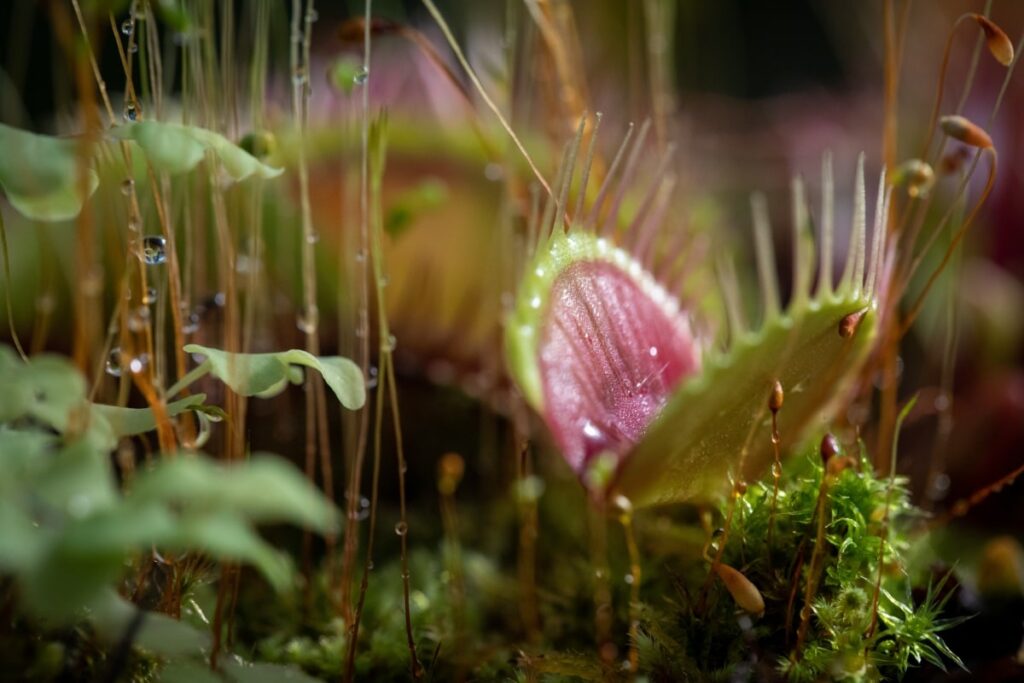
Insect-eating plants are truly remarkable and exceptional additions to any garden or indoor area. However, they require specific and meticulous care to thrive and effectively capture and digest insects. Here are some tips on how to care for these intriguing plants:
1. Watering: Insect-eating plants necessitate consistent moisture, but it’s crucial not to overwater them. Most insect-eating plants prefer to be watered with distilled or rainwater, as tap water can contain minerals that can harm the plant. Keep the soil moist but not waterlogged, and avoid letting the plant sit in standing water.
2. Lighting: Most insect-eating plants require bright, indirect light to flourish. However, some species, such as the Venus flytrap, can tolerate direct sunlight for short periods. If you’re growing your insect-eating plant indoors, place it near a bright window or under a grow light.
3. Soil: Insect-eating plants require a specific type of soil that is low in nutrients and well-draining. You can purchase pre-made soil mixes designed for insect-eating plants, or make your own by mixing peat moss, perlite, and sand.
4. Feeding: Insect-eating plants can catch their own prey, but they may also benefit from occasional feeding. You can feed your plant small insects, such as fruit flies or crickets, or use a specially-formulated insectivorous plant fertilizer.
5. Dormancy: Some insect-eating plants, such as the Venus flytrap, require a period of dormancy during the winter months. During this time, the plant will stop growing and may lose some of its leaves. Keep the plant in a cool, dark place and reduce watering until new growth appears in the spring.
By following these care tips, you can ensure that your insect-eating plant stays healthy and continues to catch and digest insects. With their unique appearance and fascinating feeding habits, insect-eating plants are sure to be a conversation starter in any space.
Conclusion: Adding Insect-Eating Plants to Your Collection
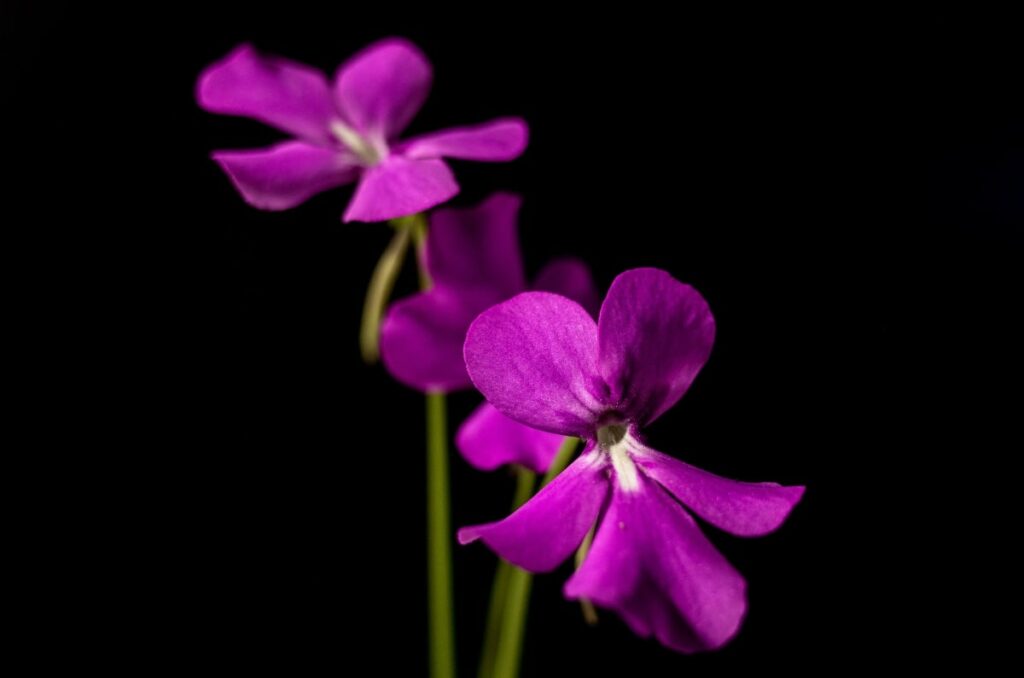
Incorporating insect-eating plants into your collection is a fantastic way to spruce up your home or garden’s aesthetic appeal while simultaneously controlling pests in a natural way. These plants are incredibly low maintenance and can thrive in a variety of environments, making them an excellent addition for both novice and experienced gardeners alike.
Whether you opt for a Venus flytrap, pitcher plant, or sundew, these plants are guaranteed to leave a lasting impression with their one-of-a-kind and captivating abilities to capture and digest insects. Not only do they provide a natural form of pest control, but they also offer a fantastic opportunity to delve into the fascinating world of carnivorous plants.
So, if you’re on the hunt for a natural and effective way to keep pests at bay in your home or garden, look no further than insect-eating plants. Not only will they add a unique and intriguing element to your space, but they’ll also help you bid farewell to unwanted bugs. Any of the plants mentioned here make our list of the best plants that eat bugs, hopefully helping you resolve any pest problems.
Frequently Asked Questions
What are carnivorous plants?
Carnivorous plants are plants that have adapted to grow in nutrient-poor environments by developing the ability to capture and digest insects and other small animals. They have specialized leaves, traps, or other structures that allow them to lure, trap, and digest their prey.
What are the benefits of having carnivorous plants?
Carnivorous plants are not only fascinating to look at, but they also provide a natural way to control insect pests in your home or garden. They can help reduce the need for chemical pesticides, which can be harmful to the environment and other beneficial insects.
What are some of the best plants that eat bugs?
Some of the best plants that eat bugs include Venus flytraps, pitcher plants, sundews, and butterworts. These plants are easy to care for and can be grown indoors or outdoors, depending on the species.
How do I care for carnivorous plants?
Carnivorous plants require specific growing conditions to thrive. They need a lot of sunlight, high humidity, and moist soil. They also need to be watered with distilled or rainwater, as tap water can contain minerals that can harm the plants. It’s important to research the specific care requirements for the species of carnivorous plant you have.
Can carnivorous plants be harmful to pets or children?
Carnivorous plants are generally safe for pets and children, as they are not toxic. However, it’s important to keep in mind that the traps of some species, such as Venus flytraps, can close on small fingers or paws. It’s best to supervise children and pets around carnivorous plants to prevent any accidents.

